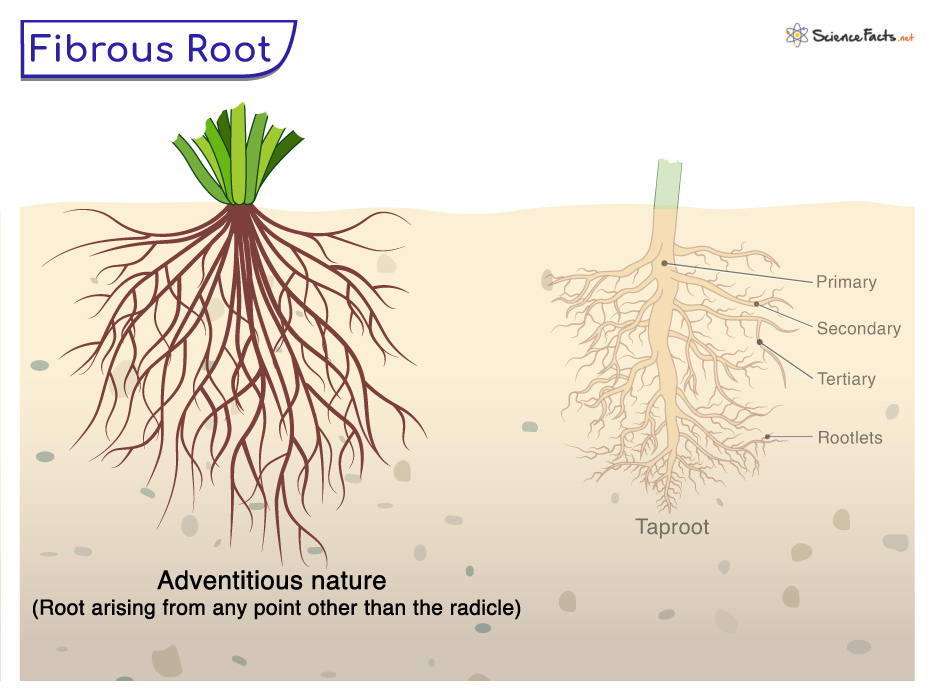Fibrous Root
Fibrous roots are adventitious roots that form a dense network of fine, thread-like roots that spread out in various directions from the base of the plant’s stem. Unlike taproots, which have a single dominant root, fibrous roots consist of multiple small roots of similar size and length.
They are universally found in monocotyledonous plants like grasses (wheat, rice, and corn), orchids, and ferns. Most cacti also have a fibrous root system. Some dicotyledonous plants, like tomato plants, also possess fibrous roots during their early growth stages.
Due to the larger surface area, the fibrous root system enables those plants to absorb water and minerals more efficiently than taproots.
Characteristics of Fibrous Roots
Fibrous roots can be identified by their key features. They are listed below:
- Slender and branching, with no main root.
- Typically thin, ranging from a few millimeters to a few centimeters in diameter.
- The radicle is short-lived and is replaced by a mass of adventitious roots.
- Grow horizontally, forming a shallow root system close to the soil surface.
- Covered with numerous tiny root hairs.
- Grow reasonably close to the ground.
Development of Fibrous Roots
Fibrous roots often arise from various plant organs such as stems, branches, or leaves. The initiation of the fibrous root can begin through several mechanisms like stem cutting, layering, and from stolons and rhizomes, depending on the plant species.
Once initiated, fibrous roots undergo a series of growth and developmental stages to establish a functional root system. They are:
- Root Primordia Formation: Primordia are small, undifferentiated tissue masses that develop into roots. They emerge from the pericycle or cortex cells and elongate in response to hormonal signals and environmental cues. They are precursors of individual fibrous roots.
- Elongation and Branching of Primodia: As the primordia elongate, they grow downwards into the soil.
- Root Hair Formation: As the primary and lateral roots elongate, specialized epidermal cells called root hairs develop along their surfaces.
- Maturation: With time, the fibrous root system matures, thus achieving its functions.
Functions of Fibrous Roots
The fibrous root system offers several advantages to a plant. They are:
- Anchoring the plant: The dense network of fibrous roots helps anchor the plant securely in the soil, preventing it from being uprooted by wind or other external forces.
- Absorbing Water and Minerals: The large surface area provided by the fine root hairs aids in the better absorption of water and essential nutrients from the soil.
- Preventing Soil Erosion: Due to their extensive spread in the soil’s top layers, they help bind the soil particles together, thus reducing the risk of soil erosion caused by rain or wind.
- Storing Food Reserves: Some plants store carbohydrates as nutrients in their fibrous roots, utilizing them during stress, such as scarcity of resources and dormancy.
However, fibrous roots are unsuitable during drought as they cannot reach deep inside the soil like the fibrous root system.
-
References
Article was last reviewed on Thursday, July 27, 2023




